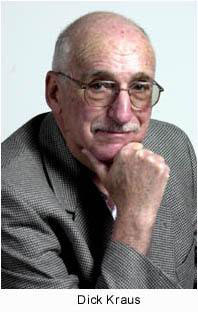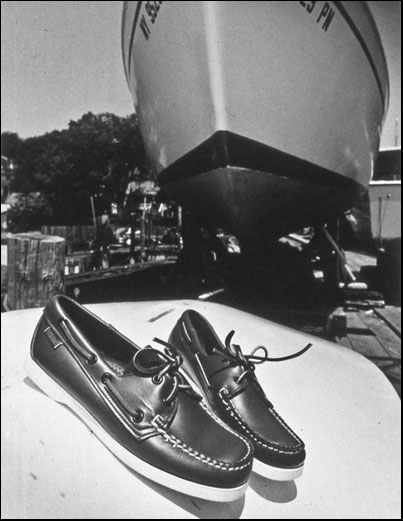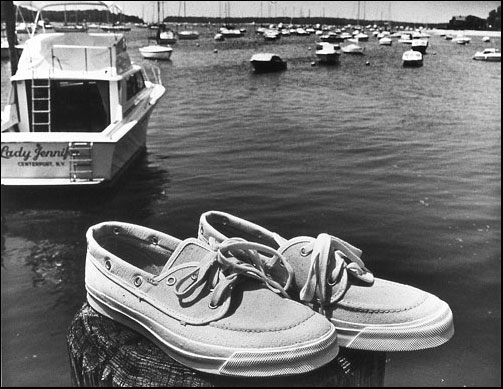|
|
|
|
|
|
THROUGH A LENS DIMLY STUDIO
ASSIGNMENTS Contrary to the common belief that newspaper photographers spend all of their working hours covering breaking news or photographing entertainment stars, royalty, political heavies and the like, most of us who have been in the business for awhile can state otherwise. It ain't always champagne and caviar. Sometimes it's just plain Mac and Cheese. There are the ever present "head shots and real estate" This is a term that encompasses the many head and shoulder pictures of people for the Business Page, press conferences and pictures of buildings or streets for any conceivable kind of story. There are in-house promotion pictures to be made and copies of paintings, maps, year book photos, and God knows what else. There are food page stories to illustrate and there's fashion. Not as exciting as racing to cover a Page One News event. But, some of them were interesting enough and some were downright challenging; especially the ones that had to be shot in our photo studio. I enjoyed doing studio work. Most news stories don't require much creativity. Mostly news is getting there and snapping a shot before it's gone. Studio work is more creative and artsy. You get to play with lights and lenses and sometimes pretty models. The models are a lot of fun to play with. Well, not really play. Professional models are very serious about their jobs. But, they are fun to look at and talk with. But, I digress. Before Newsday moved to its current large building in Melville, NY, our studio in the small Garden City, NY building was nothing more than an area tucked away behind a ratty old couch that we used to lounge on while waiting for our film to dry. There was a grungy wall that was our backdrop and a tilting artist's table that was used for table top set-ups. Our lights consisted of one very strange and very, very large deep bowled reflector on a stand that used some obscure high wattage incandescent bulb. There were two small spot-lights on stands, and a couple of Howell high intensity quartz light floods. One day, just before Easter, I was assigned to shoot a photo of a very expensive chocolate Easter Bunny. I managed to find a roll of neutral gray paper for a background. We were all black and white in those days. I carefully removed the cellophane wrap from this large, costly chocolate rabbit and set it in the center of my table top. I started setting up the lights, starting with the big bowl light. I wanted to have that strong light as a side light, with a spot just next to it for a rim light, to get the details in this exquisitely molded creation. Then I took one of the Howell floods to soften the shadows. I took an exposure reading and then went behind the camera to focus and compose my shot. When everything was set, I looked through the viewfinder just before pressing the shutter button. Wait a minute! Something looked different. The chocolate had taken on a strange texture. I quickly pressed the shutter button, milliseconds before the damned rabbit collapsed into a mass of melted brown goo. The rabbit died, but at least no one was pregnant.
I always enjoyed forcing my meager creative talents to the edge and the greatest opportunity for this came about in the studio; especially, the crude space that passed for a studio in our old office in Garden City. The lack of space; the lack of proper lights, the lack of props, backgrounds and anything that could be used to make a mundane set-up into anything arty really forced us to use our imaginations. One example of this came about when our Food Page Editor dumped several large bags of groceries on the couch. She was doing a market basket story about the rising cost of feeding a family on Long Island and she wanted some photos of food staples to illustrate her words. Lucky me. I got the assignment. Talk about making a silk purse out of a sow's ear. I stole some large white illustration board from out art department and taped a few together to make a seamless backdrop. Well, it was almost seamless. I started with the half dozen cereal boxes. I built a pyramid out of them, with spaces between the boxes. Then I took a hard spotlight and shone it behind the boxes so the light spilled out of the spaces I had left between the boxes. There was a nice shadow cast forward onto the seamless paper with little light windows where the light shone through. A little juggling with a soft flood in the front to open the shadows so you could read the print on the cereal boxes and voila! I had a nice geometrical composition. Click, click, click and then on to the potatoes. I did pretty much the same lighting with the pile of spuds and now it was time for the rice. I tore off the top and turned the box onto it's narrow side, letting the rice spill out toward the camera. I focused a hot spotlight low and from behind to pick up the texture made by the rice grains. Lookin' good. A row of soup cans was rim lit. Leafy vegetables were sprinkled with water and shot very close-up so the water droplets gleamed like little light bulbs; and so on until I was done. I souped my film and inspected the finished negatives with my loupe. I was pleased with the results. Just then, the Photo Editor came over and told me to get right over to a funeral home where there was a wake for an Assistant District Attorney who had been shot in his office the night before. His secretary, who, it turned out was also his lover, was a suspect in the murder. She hadn't been charged yet and I was told to be on the lookout for a beautiful, tall woman, in case she came to the wake. I photographed the crowd of attorneys and county officials who milled around outside the funeral home, but the beautiful woman wasn't among them. When they all went into the funeral parlor, I waited a few minutes and sure enough, a woman fitting the description that I had been given, stepped out of her car in the parking lot and walked toward the door where I was standing. She made no attempt to duck as I raised my camera and began shooting. Click, click, click and I had a series of nice open shots of her. That night she was arrested. The next morning, my photo of her appeared on page one. There were also two pages of my lovely studio food art in the middle of the paper, somewhere. They looked gooood. Later that day, I was standing at the urinal in the men's room at the office. The Managing Editor came in and took his place at the adjoining urinal. "Nice job, Kraus," he said. "Thanks, Lou," I responded. "I really put some effort into those food shots." "What food shots?" he asked. "I'm talking about page one." Of course. How stupid of me. That was the shot that required no thought or effort. I just stood there and cranked off a few shots as the lady walked right up to me. Maybe he was impressed because they were in focus. I don't know. I always thought that making in focus pictures was something that we, as professionals, were expected to do.
When we moved to our new building in Melville, some years later, we had a real, honest to goodness, professional studio. It was huge, with high ceilings and retractible, overhead electronic flash units of various outputs. We had several shooting stations, each with large roll-up seamless backgrounds. It was a pleasure to work in there. But, sometimes I felt that you had to think out of the box; or at least, out of the studio. We are an island, surrounded by water. Our fashion writers were planning a big spread about the upcoming boating season. As part of it, they were doing a feature on boat shoes.
I did the same thing later on, for another shoot. This time they wanted pictures of some very expensive leather luggage. Waiting in the studio was a matched set to be photographed. Three minutes away was Pinelawn Station; a rarely used stop on the main line of the Long Island Railroad. The LIRR is a commuter railroad which carries thousands of riders daily from their suburban homes on Long island to their jobs in Manhattan. This particular stop in Pinelawn is only used a few times a day and the only people who get off there are those who wish to visit deceased loved ones at one of several cemeteries in the area. But, there are railroad tracks and a platform and a quaint little station. That's all I needed as a backdrop for this exquisite set of luggage. I envisioned the bags sitting on the edge of the platform, with the tracks in the foreground. So we loaded the props into my car and drove to the station. I set up the bags and made several shots from various angles. Not bad, but what would really dress up the shot would be some railroad cars at the platform. I figured that a train would be along soon, since this was the main line. Even if it didn't actually stop at Pinelawn, trains always slowed up going through because there was a busy grade crossing there. Sure enough, in the east, I saw the headlights of an approaching train. I heard the low moan of the diesel horn as it headed towards us. I got into position behind my camera and focused on the bags, perched right at the edge of the platform. Something didn't look quite right though. Oh shit! That wasn't a commuter train. It was a damned freight and it wasn't slowing down, either. I grabbed my camera and tripod, and jumped back from the edge. The speeding freight roared through the station and the suction of its passing caught the empty suitcases and dragged them under the train wheels. I turned and watched these expensive designer luggage pieces tumbling about under the train until they were eventually thrown clear. In silence, we walked down the tracks, retrieving chewed up parts of what had once been a handsome set of luggage. My paper paid dearly for them, but, we did get a couple of frames before the train from Hell made its entrance. Funny, I never got any more requests to shoot for fashion after that.
Dick Kraus |
||||



